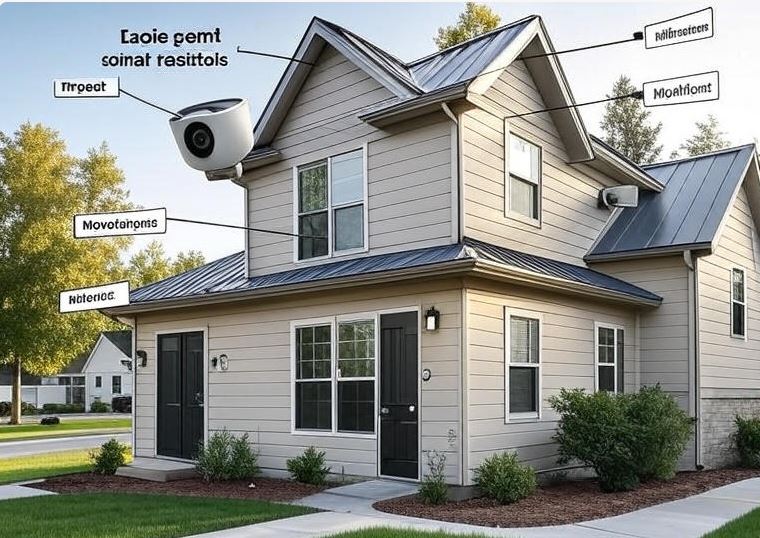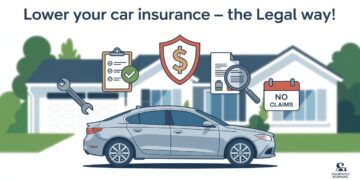Homeownership is a major milestone—but it comes with ongoing costs, and one of the most significant is home insurance. With rising inflation, increasing natural disasters, and property value fluctuations, homeowners across the U.S. have seen their premiums steadily increase year after year. Fortunately, there are legal and strategic ways to reduce your home insurance premium without compromising your coverage.
This comprehensive guide will walk you through proven methods to cut your insurance costs in 2025—covering everything from policy adjustments and home upgrades to credit score improvement and smart bundling. Whether you’re buying a new home or simply looking to lower your current premium, these tactics can make a meaningful difference.
1. Shop Around and Compare Policies
One of the most effective and often overlooked strategies is to shop around for quotes. Insurance providers assess risk differently, and premiums can vary significantly between companies for the same level of coverage.
What to Do:
-
Get quotes from at least three reputable insurers
-
Use independent agents or comparison websites
-
Check the insurer’s financial strength rating (A.M. Best, Moody’s, or S&P)
-
Review customer satisfaction scores and complaint records from the NAIC (National Association of Insurance Commissioners)
Even if you’re satisfied with your current provider, compare rates annually to ensure you’re still getting the best deal.
2. Increase Your Deductible
A higher deductible—the amount you pay out-of-pocket before insurance kicks in—can lead to lower monthly or annual premiums.
Example:
-
A $500 deductible might cost you more per year than a $1,000 deductible.
-
Raising it to $2,500 could lead to significant long-term savings—sometimes up to 25%.
Important: Only choose a deductible you can comfortably afford in the event of a claim.
3. Bundle Your Policies
Insurance companies often offer multi-policy discounts when you bundle home and auto insurance—or other policies like life or umbrella insurance.
Benefits of Bundling:
-
Potential discounts between 10% to 25%
-
Simplified billing and customer service
-
Improved loyalty benefits over time
Ask your insurer if bundling is available and compare the bundled rate with individual policies from competitors to ensure it’s actually saving you money.
4. Improve Home Security and Safety
Investing in security and safety features can lower your perceived risk and qualify you for discounts.
Recommended Upgrades:
-
Monitored home security system
-
Deadbolt locks and reinforced doors
-
Smoke and carbon monoxide detectors
-
Fire extinguishers and sprinkler systems
Many insurers offer 5%–15% discounts for qualifying systems, especially those connected to central monitoring services.
5. Disaster-Proof Your Home
As weather-related damage becomes more frequent, insurers reward homeowners who take steps to disaster-proof their property.
Smart Upgrades:
-
Install impact-resistant roofing
-
Reinforce garage doors and windows
-
Elevate utilities in flood-prone areas
-
Use storm shutters or hurricane straps in coastal zones
Some states even offer grants or tax breaks for making these upgrades (such as Florida’s My Safe Florida Home Program).
6. Maintain a Good Credit Score
Many insurance companies use your credit-based insurance score to determine your premiums. A poor credit score may indicate higher risk, resulting in higher rates.
Tips for Improvement:
-
Pay bills on time
-
Reduce credit card balances
-
Avoid opening too many accounts quickly
-
Monitor your credit report for errors
Regular credit maintenance not only helps with loans and mortgages, but it could lower your insurance rate by up to 20%.
7. Avoid Filing Small Claims
Insurance is meant for significant losses, not minor issues. Filing small claims can increase your premiums and possibly result in non-renewal.
When to File a Claim:
-
If the cost exceeds your deductible by a large margin
-
For serious structural damage or liability claims
For smaller losses (like a minor fence repair), consider paying out-of-pocket to preserve your claims history.
8. Ask About Discounts
Many homeowners miss out on potential discounts simply because they don’t ask.
Possible Discounts Include:
-
Loyalty (staying with the same company for 3+ years)
-
Claims-free discounts
-
Senior citizen or retiree discounts
-
New home or renovation discounts
-
Paying the annual premium upfront
-
Paperless billing or automatic payments
Request a discount audit from your provider to ensure you’re getting all the savings you qualify for.
9. Review Your Coverage Annually
Over time, your insurance needs may change. It’s crucial to review your policy every year and make adjustments where necessary.
Consider These Questions:
-
Has the market value of your home changed?
-
Have you added or removed valuable possessions?
-
Are you still paying to cover detached structures you no longer use?
-
Are you duplicating coverage that’s already offered in other policies (like flood or personal property)?
Regular reviews ensure you aren’t overpaying for coverage you no longer need.
10. Pay Off Your Mortgage
Homeowners who’ve fully paid off their mortgage are often seen as lower risk, and some insurers offer reduced rates.
Additionally, without a lender requiring specific coverage levels, you have more flexibility in customizing your policy—allowing for further premium reductions.
11. Choose a New Insurer Carefully
If you’re considering switching providers to lower your premium, do it carefully.
Transition Tips:
-
Avoid gaps in coverage during the switch
-
Make sure the new policy is fully active before canceling the old one
-
Understand the policy terms and exclusions—sometimes the cheapest option has the most limitations
Work with an independent agent if you need help evaluating options.
12. Take Advantage of State-Specific Incentives
Some states offer programs to help homeowners lower insurance costs through structural improvements or education.
Examples:
-
FORTIFIED™ Roof programs in hurricane-prone regions
-
Earthquake retrofit rebates in California
-
Discounts for completing home safety courses
Check with your state’s insurance department to find out what programs or resources are available to you.
FAQs
How much can I save by increasing my deductible?
Depending on your insurer, raising your deductible from $500 to $1,000 could save you up to 20–25% on your premium.
Do smart home devices help lower insurance costs?
Yes. Devices like water leak detectors, smart smoke alarms, and security cameras can qualify you for additional discounts—sometimes 5–10%.
Will my rate go up if I file a single claim?
It might. Even one claim can impact your premium, especially if it’s a liability or weather-related claim. Try to file only when truly necessary.
How often should I shop for new quotes?
Experts recommend comparing policies once a year, especially before your renewal period.
Can bundling my auto and home really save money?
Yes. Bundling often leads to multi-policy discounts ranging from 10–25% depending on the provider.
Conclusion
Lowering your home insurance premium legally in 2025 is absolutely achievable with the right knowledge and planning. By shopping around, improving your home’s resilience and security, managing your credit wisely, and regularly reviewing your policy, you can reduce your premiums without sacrificing coverage.
Remember, insurance isn’t just a bill—it’s a financial safety net. The goal isn’t to pay as little as possible, but to pay smartly and efficiently. Review your policy today and start applying these legal, practical strategies to reduce your home insurance costs this year.












